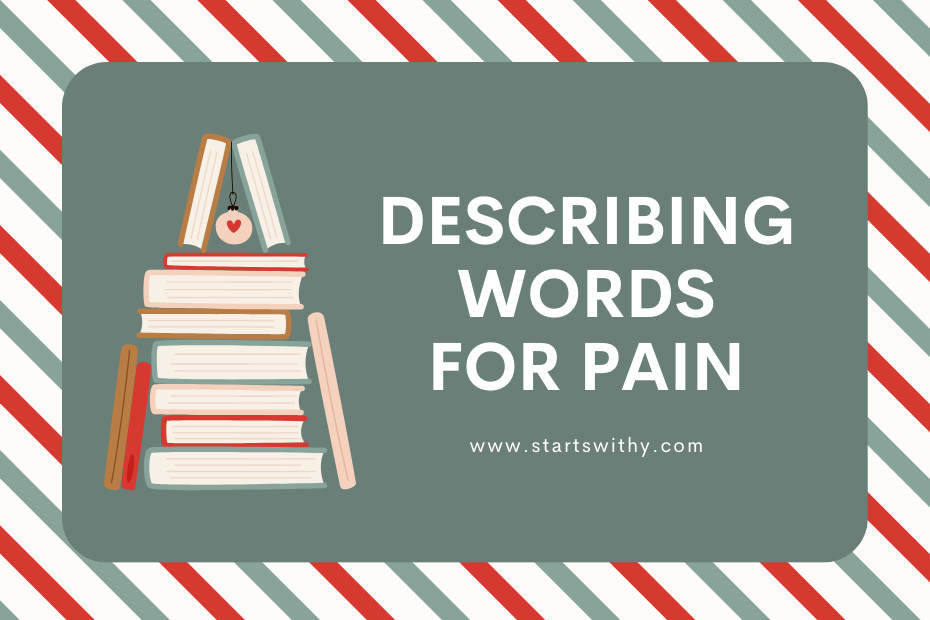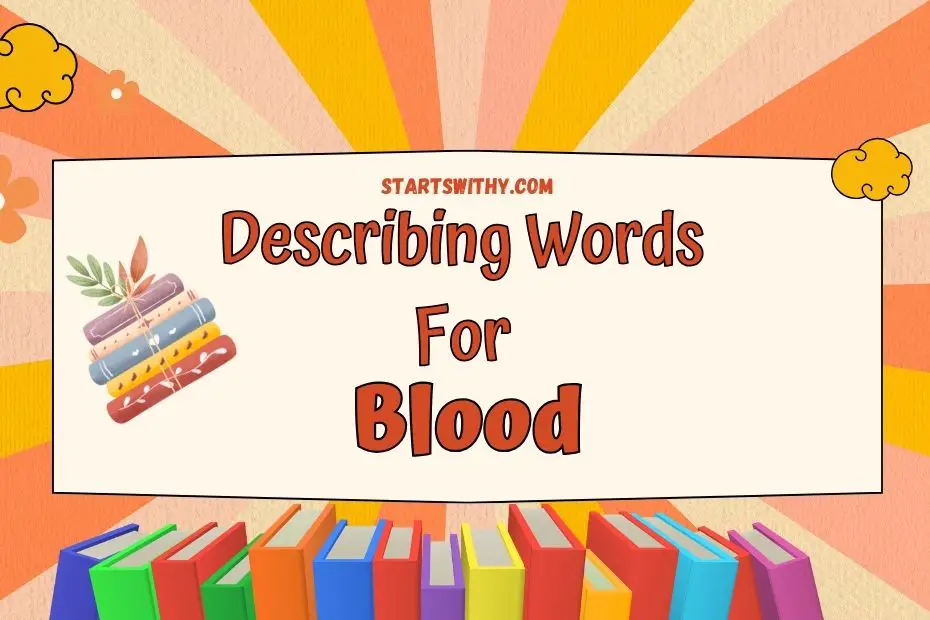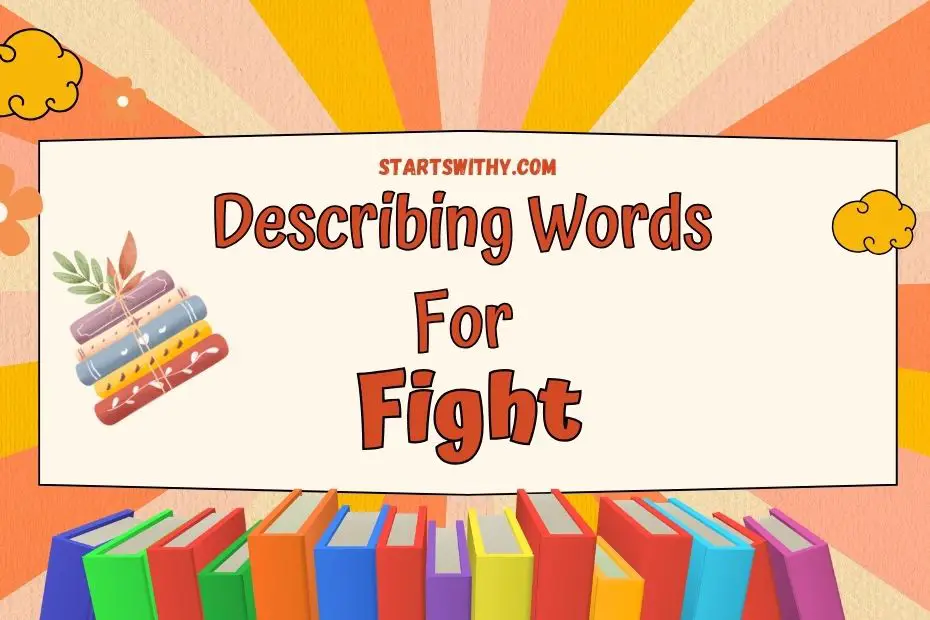How to Describe pain? – Different Scenarios
When it comes to describing pain, it’s important to find the right words to accurately convey how it feels. As someone with years of experience in writing about various topics, I have come across many different scenarios where pain is described. Let’s explore some examples and learn how to effectively describe pain in different situations.
1. Acute Pain
Acute pain refers to a sudden and intense sensation that typically lasts for a short period of time. When describing acute pain, it’s important to use words that convey the severity and intensity. Here are some adjectives that can be used to better describe acute pain:
- Sharp
- Stabbing
- Shooting
- Throbbing
- Excruciating
- Intense
- Severe
For example, if you experience a sudden, sharp pain in your finger after accidentally closing it in a door, you can describe it as a sharp and stabbing pain that makes your finger ache intensely.

2. Chronic Pain
Chronic pain, on the other hand, refers to persistent and long-lasting pain that can often be debilitating. When describing chronic pain, it’s important to focus on the duration and the impact it has on daily life. Here are some adjectives that can be used to describe chronic pain:
- Constant
- Dull
- Aching
- Nagging
- Radiating
- Debilitating
- Pounding
For example, if you suffer from chronic back pain, you can describe it as a constant and aching pain that radiates down your spine and makes it difficult to perform daily activities.
3. Nerve Pain
Nerve pain, also known as neuropathic pain, occurs when there is damage to the nerves. Describing nerve pain can be challenging as it often involves unique sensations. Here are some adjectives that can be used to describe nerve pain:
- Burning
- Tingling
- Electric
- Shooting
- Pins and needles
- Numb
For example, if you have a pinched nerve in your leg, you can describe the pain as a burning and tingling sensation that shoots down your leg, accompanied by pins and needles.
When it comes to describing pain, finding the right words can be challenging. However, effectively conveying the sensation of pain is crucial for effective communication and understanding. In this section, I’ll provide you with a list of adjectives that can be used to describe different types of pain, along with examples to help you fully grasp their usage.
Describing Words for pain in English

Acute pain
Acute pain is sudden and intense, often caused by injury or specific health conditions. Here are some adjectives that can describe acute pain:
- Sharp: The pain feels like a quick and intense stabbing sensation.
- Throbbing: The pain pulses rhythmically, similar to a heartbeat.
- Shooting: The pain radiates or shoots through a specific area.
- Stinging: The pain feels like a sharp, prickling sensation.
Examples:
- The cut on my finger was sharp and throbbing.
- I felt a shooting pain in my lower back when I lifted that heavy box.
- After being stung by a bee, I experienced a stinging pain in my arm.
Chronic Pain
Chronic pain is persistent and long-lasting, often lasting for months or even years. Describe chronic pain with these adjectives:
- Dull: The pain is persistent but not intense.
- Aching: The pain is deep and continuous, with a dull and persistent sensation.
- Searing: The pain is burning and intense, causing discomfort.
Examples:
- I have been living with a dull pain in my knee for years.
- She described the chronic pain in her joints as a deep, aching sensation.
- The searing pain in my chest made it difficult to breathe.
Nerve Pain
Nerve pain, also known as neuropathic pain, occurs when there is damage or dysfunction in the nervous system. Here are some adjectives to describe nerve pain:
- Electric: The pain feels like an electric shock, with sudden and sharp sensations.
- Tingling: The pain is accompanied by a tingling or pins and needles sensation.
- Burning: The pain feels like a burning or scalding sensation.
Examples:
- Whenever I move my arm, I experience electric shocks of pain.
- The tingling pain in my legs was a result of nerve damage.
- The burning pain in my feet made it difficult to walk.
Adjectives for pain
Pain can be described in many different ways. Using adjectives allows us to effectively convey the sensation and intensity of pain. In this section, I’ll provide you with a list of positive and negative adjectives that can be used to describe pain, along with example sentences.

Positive Adjectives for pain
When talking about pain, we often focus on the negative aspects. However, it’s important to remember that pain can also have positive qualities.
| Adjective | Definition | Example Sentence |
|---|---|---|
| Slight | Mild or minor discomfort | I felt a slight twinge in my ankle. |
| Bearable | Able to be endured or tolerated | The pain was bearable thanks to the medication. |
| Manageable | Able to be controlled or regulated | The exercises made the pain more manageable. |
| Dull | Not sharp or intense | The headache was a dull ache in the background. |
| Temporary | Lasting for a short time | The pain from the injection was temporary. |
| Tolerable | Able to be tolerated or put up with | It was a tolerable level of pain after the surgery. |
| Numb | Lacking feeling or sensation | The medication made my leg go numb. |
| Tingling | A slight prickling or stinging sensation | There was a tingling sensation in my fingers. |
| Sore | Tender or painful to the touch | My muscles were sore after the intense workout. |
| Stinging | A sharp, burning sensation | The cut on my finger had a stinging pain. |
| Aching | A continuous, deep pain | My back has been aching all day. |
| Satisfying | Providing relief or comfort | It was a satisfying feeling when the pain finally went away. |
Negative Adjectives for pain
On the other hand, pain can also be quite unpleasant and overwhelming. Here are some negative adjectives to describe pain.
| Adjective | Definition | Example Sentence |
|---|---|---|
| Severe | Intense or extreme | The pain in my chest was severe and alarming. |
| Excruciating | Intensely painful | The toothache was excruciating and kept me up all night. |
| Debilitating | Having a disabling or weakening effect | The chronic pain was debilitating, making it hard to do daily activities. |
| Unbearable | Intolerable or too painful to endure | The pain in my knee was unbearable, even with the medication. |
| Chronic | Lasting for a long time or recurring | He has been dealing with chronic back pain for years. |
Remember, accurately describing pain can help others understand what you’re going through and lead to better treatment options.
Synonyms and Antonyms with Example Sentences

Synonyms for pain
When it comes to describing pain, there are several synonyms that can help you convey its intensity and sensation. Here are some alternate words you can use to describe the discomfort you’re experiencing:
- Agony: The piercing agony shot through my leg like a bolt of lightning.
- Discomfort: The uncomfortable sensation in my stomach made it hard to concentrate.
- Distress: The distress in my chest made it difficult to take deep breaths.
- Suffering: The constant suffering in my joints made it hard to perform daily tasks.
- Torment: The piercing torment in my head felt like a never-ending drumbeat.
- Anguish: The sharp anguish radiated from my lower back, making it hard to stand upright.
- Affliction: The gripping affliction in my muscles made it difficult to move freely.
- Misery: The overwhelming misery engulfed my body, leaving me feeling drained.
Antonyms for pain
On the other hand, if you want to describe the absence or relief from pain, here are some antonyms you can use:
- Comfort: After a long day on my feet, slipping into a cozy bed brought immediate comfort.
- Ease: The doctor’s prescription provided some much-needed ease for my aching joints.
- Relief: With the pain medication, I finally felt a sense of relief from the constant throbbing.
- Soothe: The warm bath helped to soothe the soreness in my muscles.
- Pleasure: After weeks of discomfort, finally experiencing pleasure in my body was a welcome relief.
Remember, using the right adjectives to accurately describe pain can help others understand what you’re going through and lead to better treatment options. Feel free to mix and match these synonyms and antonyms to find the words that best capture your pain experience.
Conclusion
Describing pain can be a challenging task, but it is crucial for effective communication and receiving appropriate treatment. Throughout this article, I have discussed various adjectives that can be used to accurately convey the sensation of pain. By using descriptive words, we can help others understand the intensity, location, and nature of our pain.
Synonyms and antonyms for pain have been explored, providing a range of options to choose from when describing our discomfort. By using these adjectives in our conversations with healthcare professionals, we can ensure that they have a clear understanding of our experiences, leading to more personalized and effective treatment plans.
Remember, accurately describing your pain is not only important for medical professionals but also for loved ones and friends who want to support you. By using descriptive language, you can help them empathize and provide the necessary support during difficult times.
So, the next time you experience pain, don’t hesitate to reach for the right words to describe it. Your ability to effectively communicate your pain can make a significant difference in your well-being and the quality of care you receive.



